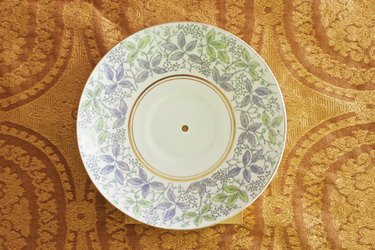
Often referred to as china, porcelain is a type of ceramic that is hard and brittle, making it more difficult and fragile to work with than most other materials. Drilling through porcelain can seem like a daunting task, but with the right tools and a few key techniques, you can easily drill through porcelain for all of your crafting needs. High quality tools and patience will make all the difference while mastering the craft of porcelain drilling.
Things You'll Need:
Video of the Day
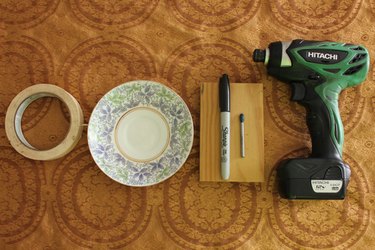
- Variable speed drill
- Precision tip diamond drill bit or precision tip ceramic/tile drill bit
- Block of scrap wood (at least 1 inch thick)
- Masking tape
- Marker
- Spray bottle filled with ice water (optional)
- Clamps (optional)
Video of the Day
Step 1
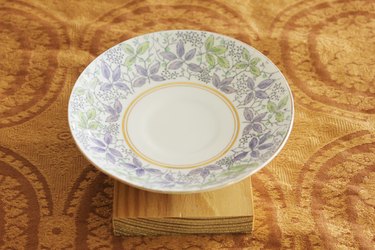
Set the porcelain plate on the block of wood. The wood will act as a buffer between your porcelain and your work area, and it will also help with shock absorption to prevent the plate from cracking.
Step 2
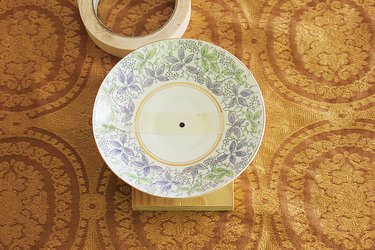
Place a piece of masking tape over the area you wish to drill and mark the exact spot with a marker. The masking tape will help prevent the drill bit from slipping and cracking the plate. The tape will also help prevent the area surrounding the drill spot from chipping.
Step 3
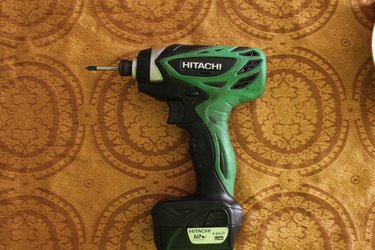
Lock your drill bit into place. It is important to buy a high quality drill bit. Cheap drill bits will slip and are likely to scratch and crack your porcelain. Make sure your drill bit is made especially for drilling through porcelain and has a precision tip to reduce slippage.
Step 4
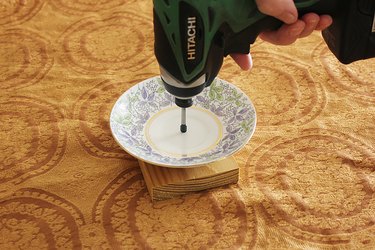
Hold the drill at a perfect 90-degree angle above the plate. If your drill allows you to set a drilling speed, set it to 100-200 RPMs. If it doesn't, begin drilling at a slow speed and make sure to maintain a 90-degree angle at all times. Apply consistent, light pressure and allow the drill bit to do most of the work for you. If the plate you are drilling through is thicker than a few millimeters, you may want to ask someone to spray ice cold water on the drill bit as you drill. This will help prevent the drill bit from overheating and cracking the plate. If you are drilling a thin plate, this is not necessary.
Step 5
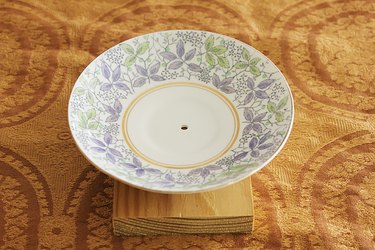
Pull the drill back out as soon as you feel the drill bit enter the wood. You will know you have hit the wood when the drill feels like it has contacted a soft surface. Remove the masking tape and wipe off any debris left on your plate.
Tips & Warnings
- If your plate is completely flat, you can use clamps to secure it in place, but make sure to sandwich the plate between two pieces of wood before tightening the clamps so you do not damage the plate. Do not use clamps if your plate is curved. Using clamps on an uneven surface will create uneven pressure and cause cracking.
- Wear safety glasses when operating the drill.
- Maintaining a 90-degree angle and applying consistent, even pressure can take some practice. You may want to buy a few cheap plates to practice on before drilling your final product. You can usually find cheap practice pieces at most thrift stores.